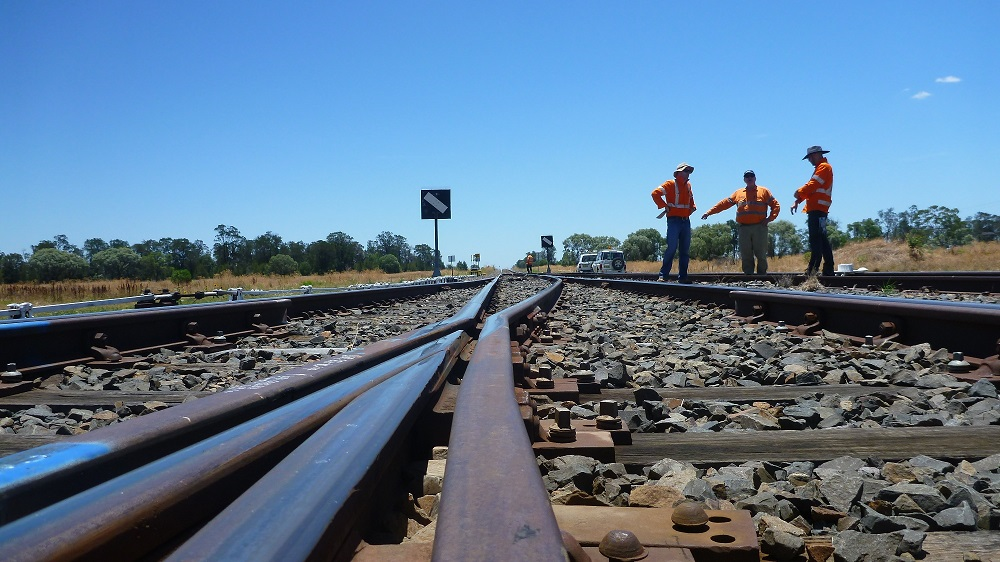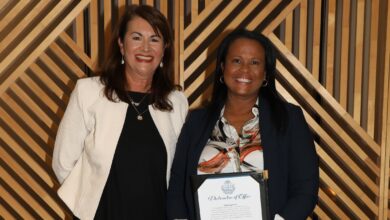The proposed Inland Rail project between Melbourne and Brisbane has been described as a once-in-a-generation project that will enhance the backbone of Australia’s national freight network.
It is a massive undertaking made up of 13 individual projects across 38 local government areas in Victoria, New South Wales and Queensland, spanning more than 1,700km.
We take a look at what it’s all about and what it means for Ipswich.
Who is responsible for the project?
Australian Rail Track Corporation (ARTC) has been appointed by the Australian Government to deliver the Inland Rail program in partnership with the private sector.
ARTC was created after the Commonwealth and State governments agreed in 1997 to form a ‘one-stop’ shop for all operators wanting access to the standardised national interstate rail network.
It is focused on infrastructure investment and the modernisation of the interstate rail network and currently manages and maintains an 8,500km rail network across five states.
The Australian Government has committed $9.3 billion for ARTC to develop and build Inland Rail. Additional funds will come from a partnership with the private sector.
What’s it all about?
Moving stuff – goods and produce to be specific.
Australia is a big country and as our population grows, so too does our demand for items. Australia is a world-class exporter, with Australian goods and produce in demand around the world.
It’s important Australian industries can move items between cities, regions and ports efficiently to remain competitive on the world stage but also to keep costs down at home.
Most rail freight between Queensland and the southern states is moved along the coast. Population growth and increased demand mean additional network capacity is needed into the future.
Moving freight by rail – compared to road transportation – costs less and reduces congestion on roads, particularly the nation’s busiest highways. ARTC says Inland Rail will:
- Allow two million tonnes of agricultural freight to switch from road to rail;
- Offer a transit time less than 24 hours between Melbourne and Brisbane;
- Reduce the distance freight has to travel between Melbourne and Brisbane by 200km;
- Improve road safety and mean fewer serious crashes;
- Make the national freight rail network less vulnerable to disruptions such as extreme weather events;
- Reduce carbon emissions by 750,000 tonnes per year.

What is council’s role in the project?
Ipswich City Council is not responsible for the Inland Rail project. In the interest of protecting the community’s needs, council has played an active role in various working groups with the ARTC and via formal submissions about the proposal. Staff have been advocating for better transport, land use, economic and social outcomes.
Council’s submissions are available here. Council will now wait until the draft Environmental Impact Statement for each of the Ipswich sections is released before considering any further comment.
Where does Inland Rail go in Ipswich?
Two sections of the line run through the Ipswich local government area. They are: Helidon to Calvert and Calvert to Kagaru.
What is involved in each of these sections?
The Helidon to Calvert section is expected to cost $1 billion and includes:
- Forty-seven kilometres of single-track dual-gauge freight line to accommodate double stack freight trains up to 1800 metres long.
- A 1.1km tunnel through the Little Liverpool Range.
- Construction of rail infrastructure, culverts, bridges, viaducts and crossing loops.
- Connection to the existing West Moreton Railway Line.
- Ancillary works including road and public utility crossing and realignments.
It is estimated 1,800 jobs will be created during the construction of this section.
The Calvert to Kagaru section is expected to cost $1.2 billion and includes:
- Fifty-three kilometres of single-track dual-gauge freight rail line to accommodate double stack freight trains up to 1800 metres long.
- About 1.1km of tunnels through the Teviot Range.
- Construction of rail infrastructure, bridges, viaducts and crossing loops.
- Connection to the existing West Moreton and Interstate railway lines.
- Ancillary works including road and public utility crossings and realignments.
It is estimated 1,600 jobs will be created during the construction of this section.
Is there a map?
Yes. An interactive map is available on the ARTC website.
Check out the interactive map covering the Calvert to Kagaru section here.
Check out the interactive map covering the Helidon to Calvert section here.
Is the project approved?
Sections within New South Wales are underway. The two sections within Ipswich City Council boundaries are not yet approved.
ARTC is required to complete an Environmental Impact Statement (EIS) for each section of the project, which the State Government will then consider before deciding if the project can proceed.
ARTC is currently preparing an EIS for each of the Ipswich sections of the project, having previously finalised terms of reference for them.
Are there concerns about the project?
Yes. Concerns have been raised by various communities along the route about the impact increased freight movements through regionals towns may have on amenity, the environment and daily life.
When will the first train run?
Since 2014, ARTC has been working on pre-construction activities, including a detailed business case, refinement of the route, community consultation and preliminary design.
In 2015, ARTC developed a 10-year delivery schedule for Inland Rail.
Pending approvals, ARTC wants to complete the two sections of the line in the Ipswich local government area by 2024.
All going to ARTC’s plan, trains that are double stacked and up to 1,800m long – that’s 18 lengths of a football field – will make their way along the line from 2025.
How can you find out more information?
A project office was opened earlier this year in Gatton at the Lockyer Valley Regional Council offices at 47 North Street.
More information is also available on the ARTC website at inlandrail.com.au, by phoning 1800 731 761 or emailing [email protected]



Are there any plans to divert the coal and freight trains away from Ipswich CBD?